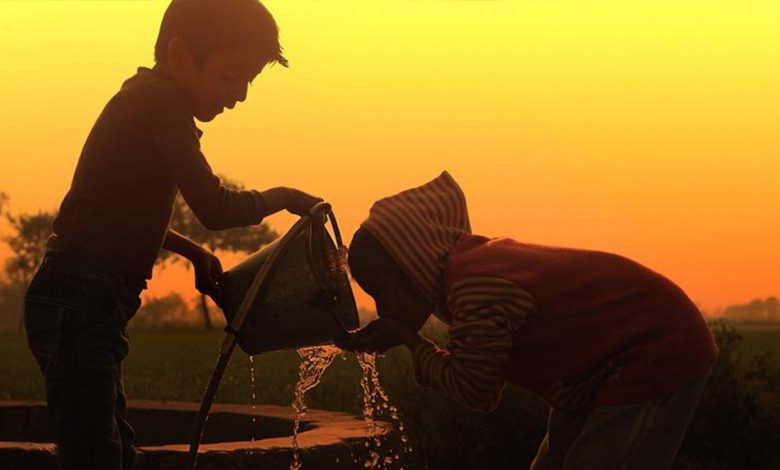Daily Current Affairs for UPSC
Groundwater yearbook 2021-2022
Topic- Environment and Ecology [GS Paper-3]

Context- Recently, a report titled “Groundwater yearbook 2021-2022” was released on the state of groundwater. It was released by the Central Ground Water Board (CGWB).
Key Highlights
- Among the Indian states, twelve states have uranium levels beyond permissible limits in their groundwater.
- Punjab is the worst-affected state considering the percentage of wells found to have uranium concentration of more than 30 ppb.
- Haryana stands as the second state in terms of uranium prevalence in groundwater.
- 9.2 percent of the samples collected from Uttar Pradesh had a high concentration of uranium.
- Uranium concentration is found to be within safe limits in thirteen Indian states.
- The safe levels given by the Bureau of Indian Standards (BIS) and the World Health Organization (WHO) is 30 ppb.
Causes of contamination
- Geogenic processes are mainly responsible for uranium contamination.
- High levels of uranium are vastly due to natural uranium content in aquifer rocks, oxidation state and groundwater chemistry.
- Overexploitation of groundwater has been observed in all types of aquifers in the country, which was also confirmed in another 2021 study by researchers from Bhabha Atomic Research Centre (BARC) and Homi Bhabha National Institute.
- Extreme bicarbonate levels were also found at the sites where high uranium levels are very high.
- Bicarbonates help to bring the uranium out of the source rocks and it is a reason for the high occurrence of the element.
- The interaction of the extracted uranium with other chemicals in the groundwater, like bicarbonate, which can further enhance its solubility.
- Water-rock interactions that cause the uranium to be extracted from the rocks.
- Oxidation conditions enhance the extracted uranium’s solubility in water.
- The human-made causes too are behind this:
- Over-exploitation of groundwater from irrigation then exacerbates uranium mobilisation.
- It is likely to be one of the causes for uranium and other geogenic contaminants, including arsenic and fluoride.
What is Uranium?
- Uranium is a naturally occurring element found in low levels within all rock, soil, and water.
- Uranium is a weak radioactive substance due to its long physical half-life.
- It is the highest-numbered element to be found naturally in significant quantities on earth.
- Groundwater:
- Uranium is a nephrotoxic element and can have an bad impact at very high concentrations.
- It means that people dependent on groundwater containing the element are at a higher risk of impaired renal function and kidney disease.
- Exposure to uranium can also lead to other adverse health impacts, including bone toxicity.
Threat to Groundwater
- Degradation from human activities, often associated with poor land, agricultural, and waste management mainly threatens
- Current uses of groundwater
- Human and ecosystem health
- Limits benefits of future generations
- The issue is more pronounced in South Asia because much of the groundwater is heterogenous.
- About 70 percent of groundwater is hosted only in 30 percent of land cover in south Asia and the rest is hosted in areas covered by Himalayan rivers.
- Water pollution is another problem as much of the groundwater is polluted by contaminants such as arsenic and Fluoride.
- More than 400 million people are exposed to these pollutants. Hence, it is not just a quantity issue but also a water quality issue in India.
Health Impact
- Exposure to uranium may lead to several adverse health impacts including bone toxicity and impaired renal function.
- Exposure to uranium could cause cancer.
Significance of Groundwater
- Ground water has become an increasingly significant natural resource catering to the fresh water requirements of various sectors in India.
- Ground water has emerged as the backbone of India’s agriculture and drinking water security.
- Around 90% of this was used for irrigation, the rest went to towns and villages.
- Groundwater is the principal water source for a fourth of the world’s population and India is the world’s largest groundwater user; nearly 250 cubic kilometres was taken out in 2017.
Way Ahead
- There is a need for an urgent response from all stakeholders as Protection of groundwater must be guaranteed across all sectors including agriculture.
- Governance, actions and investments on groundwater must be prioritized in vulnerable and climate change / hazard-exposed regions, including sub-Saharan Africa, Small Island Developing States and coastal zones, areas with no or slowly renewable and vulnerable aquifers, and aquifers with naturally occurring but hazardous contaminants, like arsenic
- Reverse osmosis (RO) is one of the latest membrane-based technologies used in water purification systems in order to remove uranium.
- More studies and Research should take place on the removal of uranium from drinking water using a hybrid membrane technique.





.png)



